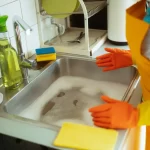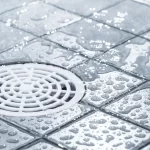Flooding is a significant concern for homeowners, particularly in areas prone to heavy rainfall and high groundwater levels. One of the most effective solutions to prevent basement flooding and protect your home’s foundation is the installation of a weeping tile system. In this comprehensive guide, we will explore the role of weeping tile systems in flood prevention, how they work, and why they are essential for maintaining a dry and safe home.
What is a Weeping Tile System?
Despite the name, weeping tiles are not tiles at all. They are porous pipes, typically made of plastic or clay, designed to collect and channel excess water away from your home’s foundation. These pipes are buried around the perimeter of your foundation or under the basement floor, creating an efficient drainage system that prevents water accumulation and reduces hydrostatic pressure.
How Weeping Tile Systems Work
Weeping tile systems function by providing a pathway for water to escape from the soil surrounding your foundation. Here’s a step-by-step overview of how they work:
- Water Collection: As water accumulates around your home’s foundation from rain, melting snow, or high groundwater levels, it creates hydrostatic pressure against the foundation walls.
- Water Channeling: The porous weeping tiles collect this excess water from the surrounding soil.
- Water Discharge: The collected water is then channeled away from the foundation, either into a storm sewer, a sump pump, or a drainage ditch, effectively relieving the hydrostatic pressure and keeping your basement dry.
Benefits of Weeping Tile Systems
Installing a weeping tile system offers several benefits that contribute to flood prevention and the overall health of your home:
1. Prevents Basement Flooding
By efficiently channeling water away from your foundation, weeping tiles prevent water from seeping into your basement, reducing the risk of flooding and water damage.
2. Reduces Hydrostatic Pressure
Weeping tiles alleviate the hydrostatic pressure that builds up around your foundation during heavy rainfall or snowmelt. This pressure can cause cracks and leaks in the foundation walls, leading to structural damage.
3. Protects Foundation Integrity
By managing water flow and preventing soil saturation, weeping tiles help maintain the structural integrity of your foundation, preventing issues such as settling, cracking, and bowing walls.
4. Prevents Mold and Mildew
A dry basement is less likely to develop mold and mildew, which can cause health problems and unpleasant odors. Weeping tiles help keep your basement environment dry and healthy.
5. Increases Property Value
Homes with effective waterproofing systems, including weeping tiles, are more attractive to potential buyers. A well-maintained weeping tile system can increase your property’s value by ensuring a dry and stable foundation.
Installation of Weeping Tile Systems
Installing a weeping tile system involves several steps and should be done by a professional to ensure effectiveness. Here’s an overview of the installation process:
1. Excavation
The first step is to excavate around the perimeter of your foundation or under the basement floor to create a trench for the weeping tiles.
2. Laying the Weeping Tiles
Porous pipes are laid in the trench, ensuring they are properly sloped to direct water away from the foundation. The pipes are typically surrounded by gravel to enhance drainage.
3. Connecting to a Drainage System
The weeping tiles are connected to a drainage system, such as a storm sewer, sump pump, or drainage ditch, to channel the collected water away from the foundation.
4. Backfilling
The trench is backfilled with soil and compacted to restore the ground around your foundation. The area is then graded to ensure proper surface drainage away from the house.
5. Testing
Maintenance of Weeping Tile Systems
Regular maintenance is essential to ensure your weeping tile system continues to function effectively. Here are some maintenance tips:
1. Regular Inspections
Inspect your weeping tile system regularly for signs of blockages or damage. Look for areas where water is pooling around your foundation, as this can indicate a problem with the system.
2. Clean Gutters and Downspouts
Ensure your gutters and downspouts are clean and free of debris. Clogged gutters can overflow and direct water towards your foundation, overwhelming the weeping tile system.
3. Check Sump Pump
If your weeping tile system is connected to a sump pump, regularly check the pump to ensure it is working correctly. Test the pump by pouring water into the sump pit and ensuring it activates and pumps water away from the foundation.
4. Address Landscaping Issues
Ensure the ground around your foundation slopes away from the house to prevent water from pooling near the foundation. Avoid planting trees or shrubs with aggressive root systems near the foundation, as roots can damage the weeping tiles.
When to Call a Professional
While some maintenance tasks can be handled by homeowners, there are times when it’s best to call a professional:
1. Persistent Water Issues
If you notice persistent water issues around your foundation despite regular maintenance, it’s essential to have a professional assess the situation and recommend solutions.
2. System Blockages
If your weeping tile system becomes blocked, a professional can use specialized equipment to clear the blockage and restore proper drainage.
3. Installation and Repairs
Installing or repairing a weeping tile system requires expertise to ensure it functions correctly. A professional can ensure the system is installed or repaired to industry standards.
Conclusion
Weeping tile systems play a crucial role in flood prevention by managing water flow around your home’s foundation. By preventing basement flooding, reducing hydrostatic pressure, and protecting the structural integrity of your foundation, weeping tiles are an essential component of any effective waterproofing system. Regular maintenance and professional installation are key to ensuring your weeping tile system continues to protect your home from water damage.
Call to Action
If you’re considering installing a weeping tile system or need maintenance for your existing system, contact Absolute Draining & Plumbing. Our experienced team is here to help you with all your waterproofing needs, ensuring your home remains dry and safe. Contact us today to schedule a consultation and protect your home from flooding.
Additional Resources
For more information on weeping tile systems and flood prevention, check out these helpful resources:






